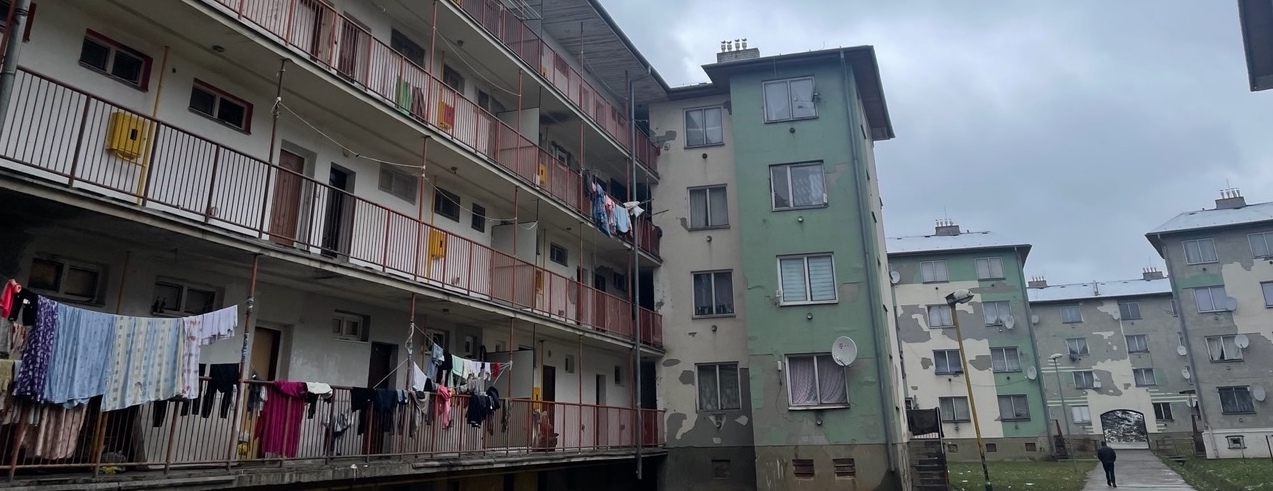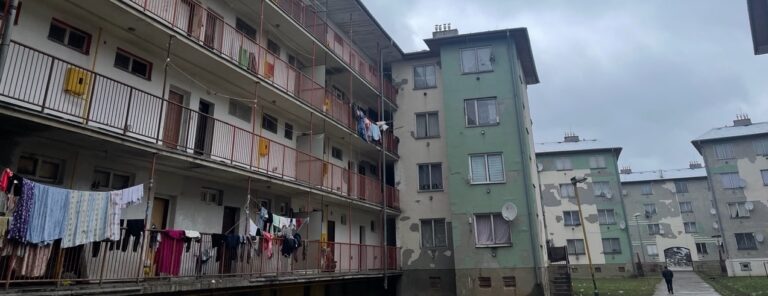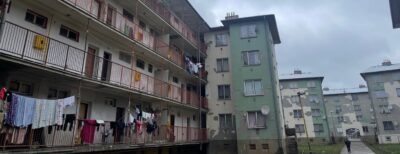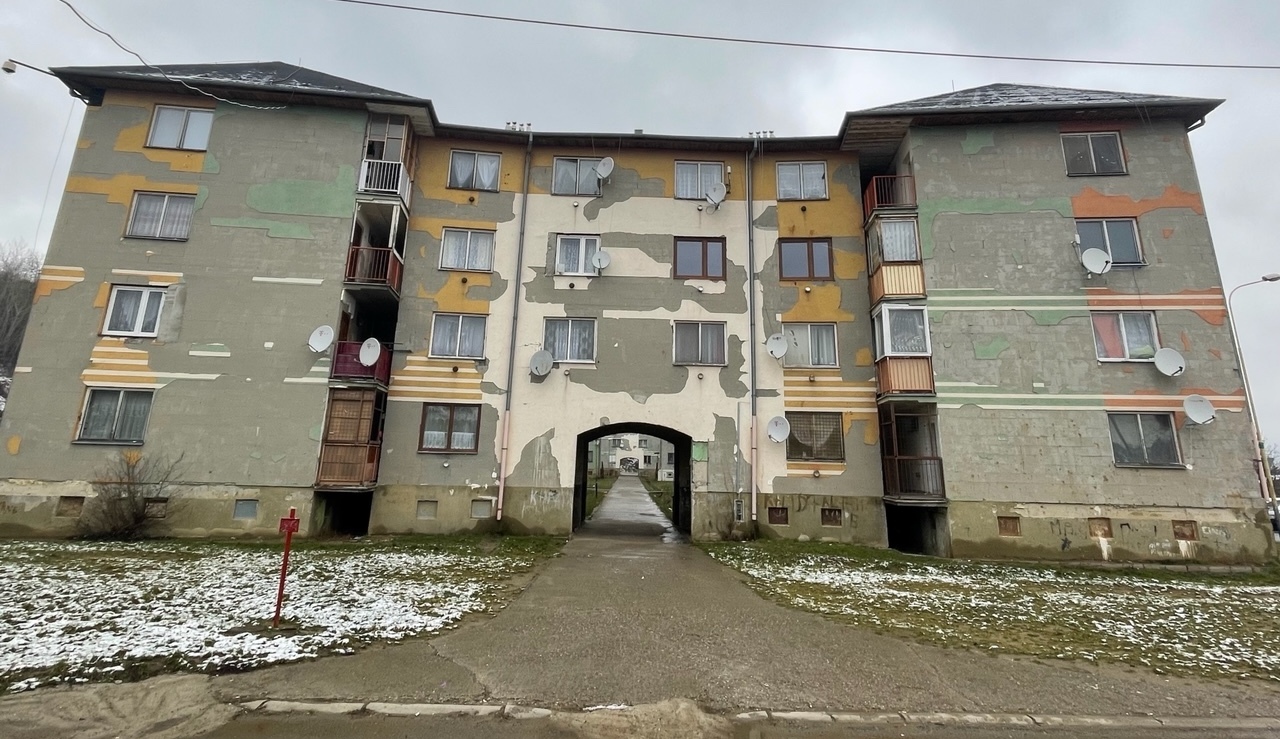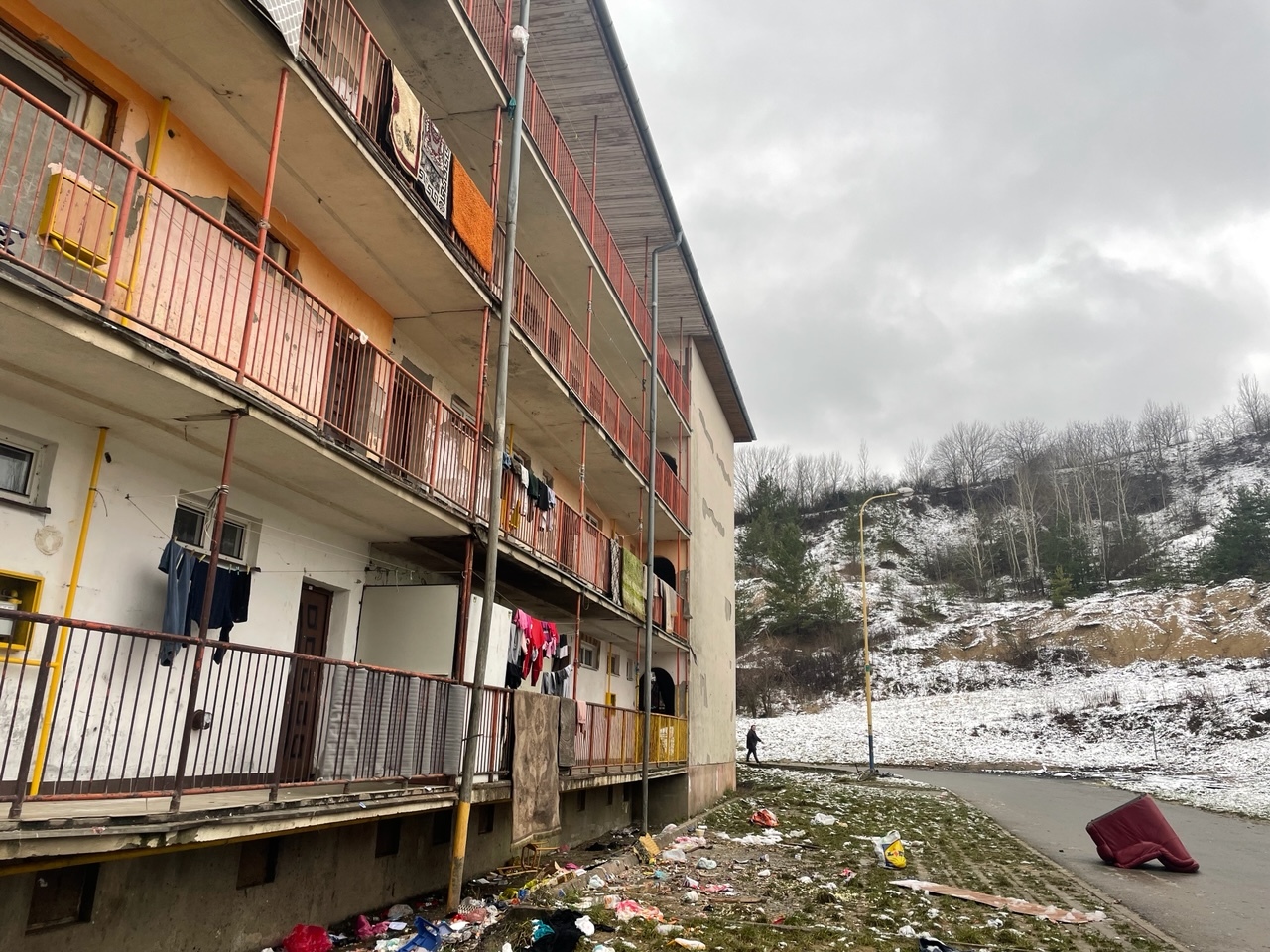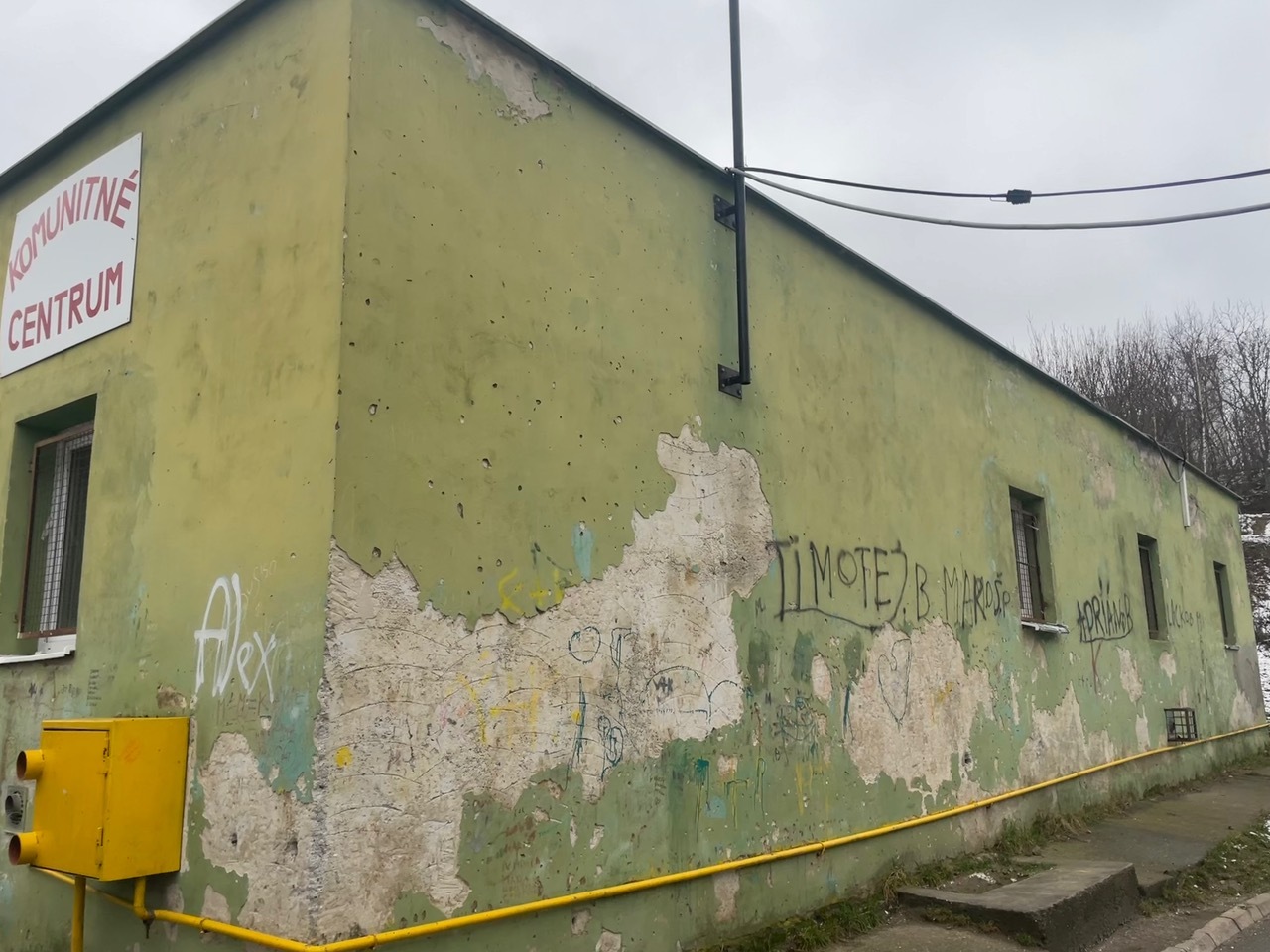by Bence X. Szechenyi
It was snowing hard as my train pulled into Košice and my phone was blaring periodically with flash-flood warnings. In late January, the temperature was below freezing. My destination was Prešov, a city to the north of Košice, an area with a significant Roma population. Like many Eastern Central European cities of the same size, two-story, colorful, Habsburg-era buildings line the main street which culminates in a large church. Further from the church, greyer, brutalist, Soviet architecture imposes itself.
Russia’s weaponization of its energy supplies in the lead-up to its invasion of Ukraine have resulted in inflated gas prices, increased heating costs, and a general cost of living spike for many Europeans. These effects have been felt tremendously across the border from Ukraine, in Eastern Slovakia. This region, even compared to the rest of Eastern Central Europe, has faced historical disenfranchisement. Prešov’s area was already home to disfunction, but it was made worse by Russia’s invasion of Ukraine, the country just 120 km east.
The war’s impacts are felt especially hard by the region’s Roma population. “The truth is, it has always been difficult to fundraise for Roma support, the war has made it even harder,” said Viktor Teru, advisor on Roma affairs to Slovakia’s president Zuzana Čaputová. Teru accompanied me on my field research in Roma communities, translating from Slovak and providing information to contextualize responses I received during interviews.
Teru described how the pressing issue of the war and refugee influx has taken attention away from Roma communities. The difficulties that many Roma face, which were already commonly ignored, now get even less attention from the Slovak government, NGOs, and private donors. Local Roma people I spoke with explained how the conditions in their communities have worsened because of the war, and how, as the violence rages on in the country next-door, it has become harder to get people to care.
The disenfranchised among the poor
I visited a few Roma communities in the region, but one called Tehelná especially stood out. It consists of a long building with a courtyard and crooked balconies running along its perimeter, providing access to the front doors that face the center. Litter was scattered around the courtyard, which little kids skipped through. The paint has mostly chipped off the building, leaving its original colors of green, yellow, and red only visible in splashes. Without the paint, the buildings cinderblock walls are exposed, which, according to the social workers in the locality’s community center, are entirely uninsulated in an example of “government fraud,” as they put it.
In the building there are 176 apartments, consisting of either one, two, or three rooms total. The building has around 1100 residents, according to the social workers, which would equate to 6.25 people per apartment. Even the lucky ones, those with three room apartments, would have to have two people sleeping in each room.
For obvious reasons, many residents’ primary goal is to secure a different place to live. Housing programs exist, the municipality constructs affordable houses that families can get a mortgage for, provided they have sufficient income. With employment in Eastern Slovakia as allusive as it is, unemployment in the region is high compared to much of Europe, but it is even more difficult for Roma people to obtain the necessary income as they face discrimination in the labor market. “If they are called in for an interview, racism becomes a problem,” a social worker helping the Roma told me. They are likely to be dismissed as a candidate after one glance.
The consequences of Russia’s war only made this worse. Slovakia is sheltering more than 109,185 Ukrainian refugees, according to the most recent UNHCR data. The social workers in the locality insisted that this has made it even harder for Roma people to find employment.
The Slovak government began initiatives for Ukrainean refugees’ integration into Slovakian life, including financial support to companies that hire refugees. This is a well-intentioned measure, but it had unintended consequences in Roma communities. Roma people were already disadvantaged in the labor market but the incentives to hire refugees has made it even more difficult for them to find and hold proper employment.
Social workers said that most of the Roma residents earn a living through social support, which mandates people to work a job such as street sweeping to earn around 8 euros per day. It is hard work for almost no pay, just enough to afford these destitute conditions, but certainly not enough to move. Saving money was close to impossible, even before the war.
An official working for the government in the region, who asked to remain anonymous to protect his position, told me, “In Eastern Slovakia, families must decide whether they want a house or a child.” There is no money for both, he claimed. When asked about the financial impacts of the war, the government official provided a personal example. His own family’s electric bill, he claimed, had increased dramatically that fall.
The government official was forthcoming with the fact that he is in a privileged position compared to most, earning a far better salary than average in the region. Despite this, the increase in costs, particularly the dramatic increase in energy prices, has put a strain on his family. He can survive this difficult winter because of his financial cushion, but many in the region already lived on a knife’s edge.
Many Roma people, who were barely able to afford these decrepit apartments before the war, are not able to cover the increase in energy costs. Only about half of the crowded apartments have electricity anyways, the social workers said. Many residents want to leave, I was told, but some of them are struggling to afford even their apartment in this settlement, with uninsulated walls and sometimes no electricity at all.
At the end of my interviews, as Viktor Teru and I began to leave the community, a social worker pulled Teru aside and asked if he knew about any better paying jobs. “Even the social workers struggle to survive,” Teru told me after.
Most of the Roma people I asked about the war in general responded by commenting on the local effects. Naturally for a people facing systematic discrimination, with many struggling to survive, geopolitics was not their first concern. One Roma man I spoke to, while having a beer in the bus station, just shook his head when I asked what he thinks of the war. He said, “It makes it harder for us to live.”
Even refugees do not want to stay in Eastern Slovakia
Teru also runs a group called Roma for Humanity, which provides aid for Ukrainian refugees in Slovakia. An estimated 100,000 Roma people are among the refugees forced to flee their homes in Ukraine. Asked whether Roma refugees arriving to Slovakia have been receiving the same resources and assistance as others fleeing the Ukraine, Teru described problems at the border, with Roma people being forced to wait in separate lines while white refugees passed easily.
Following our field reporting, Ábel Ravasz, a sociologist dealing with minority policy and a former government plenipotentiary for Roma communities, provided additional insight on the experiences of Roma refugees at the border. He claimed that “In several cases, right from the first days, we heard credible reports of Roma and non-Roma refugees being segregated in refugee centres, put in different quality places.”
Ravasz also described the attempted exploitation of the aid resources by some Roma, “There was some frustration at major border crossings with large groups of Roma arriving, entering, picking up aid, food, clothing, and then returning to Ukraine.” This created tensions at first, but the government’s commissioner for Roma affairs sent staff to the border to manage the issues that contributed to the initial segregation at the border. Ravasz said that despite the reasoning, “it was very depressing to be fleeing your country of war and not being properly welcomed.”
The issues faced by Roma refugees did not end at the border, however. Discrimination, Teru explained, effects Roma refugees at every stage of the asylum-seeking process.There have been reports that Roma have been denied access to the same resources that other Ukrainian refugees have gotten in host countries because people do not believe they are ‘truly’ Ukrainian. The European Union allowed for refugees from Ukraine to enter the EU without travel papers, a measure to help people to get away from danger quickly. Many Roma people didn’t have any travel documents, Teru said, so while this measure allowed them to leave Ukraine, they had a harder time proving they were Ukrainian refugees once they reached a safe country.
To complicate things further, many Roma people from Transcarpathia, Ukraine’s Western region neighboring Slovakia, Hungary and Romania, are Hungarian speaking, making it more difficult to prove they are Ukrainians. Some Hungarian speaking Ukrainians have Hungarian passports as well as Ukrainian. Czech politicians, for example, claimed that many Roma refugees carried Hungarian passports and so were just being opportunists. This accusation was found to be false for the majority. In many cases, people tasked with assisting refugees just saw them as Roma, and their biases made them think they were economic migrants and not refugees.
I asked if any of the refugees had settled in existing Roma communities, such as the one in Prešov. Teru shook his head vigorously, saying that there were much better options available to them as refugees. He said that for most refugees, Slovakia is not the desired destination, especially not Eastern Slovakia. Better opportunities and governmental support can be found in other EU member states, such as Germany.
Eastern Slovakia is one of the most impoverished areas in the European Union. The GDP per capita in the region is just 54% of the European average, while in Bratislava, in Western Slovakia, the GDP per capita is 173% on the European average. This ostracization of the Eastern region is typified by the lack of infrastructure construction. Slovakia has repeatedly delayed its highway building project, which would connect the Eastern region to the West. Despite the country investing €7.7 billion in highways, not a single kilometer of this has been built in the East by the end of 2021.
Teru told me a stories of Roma families that arrived in Slovakia and were living in poor conditions, like what I observed in Prešov. Roma for Humanity were able to connect these families with support resources in Germany, and help the families relocate. These families were able to escape the destitute conditions that many Slovakian Roma live under.
Despite the bitter irony of losing their home being an opportunity, Roma refugees did not always escape hostile sentiments even in the Western European countries they fled to. Teru told the story of a family, a husband and wife with three children, who even after reaching Germany, eventually decided to return to Ukraine because of the unwelcoming environment they were facing.

